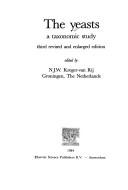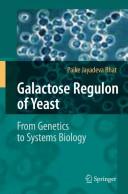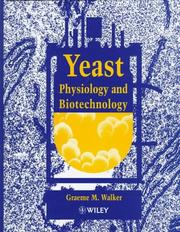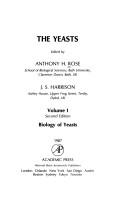| Listing 1 - 10 of 15 | << page >> |
Sort by
|
Book
Year: 1901 Publisher: [Jena] : [Gustav Fischer],
Abstract | Keywords | Export | Availability | Bookmark
 Loading...
Loading...Choose an application
- Reference Manager
- EndNote
- RefWorks (Direct export to RefWorks)
Sérum sanguin --- Animaux --- Blastomycètes --- Système sanguin

ISBN: 0444804218 132225737X 1483290174 9780444804211 Year: 1984 Publisher: Amsterdam Elsevier
Abstract | Keywords | Export | Availability | Bookmark
 Loading...
Loading...Choose an application
- Reference Manager
- EndNote
- RefWorks (Direct export to RefWorks)
Eumycetes --- Botan. systematics, taxonomy, nomencl. --- -Yeast fungi --- -582.282 --- Yeasts --- Fungi --- Identification --- identification --- Classification --- classification --- Yeast fungi --- Classification. --- 582.282 --- 582.282 Ascomycetes --- Ascomycetes --- Basidiomycetes --- Blastomycetes --- Endomycetales --- identification. --- classification. --- Yeast fungi - Classification --- Fungi - Classification --- Taxonomy
Periodical
ISSN: 23782552 Year: 2008 Publisher: [Washington, D.C.] : U.S. Dept. of Agriculture, Agricultural Research Service
Abstract | Keywords | Export | Availability | Bookmark
 Loading...
Loading...Choose an application
- Reference Manager
- EndNote
- RefWorks (Direct export to RefWorks)
Yeast fungi --- Farm produce --- Agricultural biotechnology --- Agricultural biotechnology. --- Biotechnology --- Diseases and pests --- Biological control --- Biotechnology. --- Yeast --- Microbial biotechnology --- Yeast industry --- Agro-biotechnology --- Agricultural commodities --- Agricultural products --- Produce --- Agriculture --- Food --- Raw materials --- Plant products --- Produce trade --- Yeasts --- Fungi --- Basidiomycetes --- Blastomycetes --- Endomycetales

ISBN: 1281241865 9786611241865 3540740155 3540740147 3642093302 Year: 2008 Publisher: Berlin, Heidelberg : Springer Berlin Heidelberg : Imprint: Springer,
Abstract | Keywords | Export | Availability | Bookmark
 Loading...
Loading...Choose an application
- Reference Manager
- EndNote
- RefWorks (Direct export to RefWorks)
The galactose regulon of yeast is one of the best studied regulons. It is an ideal paradigm for demonstrating fundamental and evolving concepts in biology and is used in this book as a model system to explain various facets of conventional and modern biology. The book starts with a brief historical overview on yeast research, i.e. early observations in enzyme adaptation, classical genetics, formulating hypotheses based on genetic inference. This is followed by molecular genetics of the galactose regulon, isolation of genes and testing of the hypotheses. The power of mutational analysis in deciphering molecular mechanisms is conveyed. Further, contemporary topics such as genomics, evolution, single cell analysis of transcriptional switching, binary and graded responses, biological consequences of feed back regulation in genetic circuits, and stochasticity are addressed.
Galactose. --- Yeast fungi --- Molecular genetics. --- Yeasts --- Fungi --- Basidiomycetes --- Blastomycetes --- Endomycetales --- Glycosides --- Monosaccharides --- Microbiology. --- Microbial genetics. --- Microbial genomics. --- Cytology. --- Biochemistry. --- Biotechnology. --- Microbial Genetics and Genomics. --- Cell Biology. --- Biochemistry, general. --- Biological chemistry --- Chemical composition of organisms --- Organisms --- Physiological chemistry --- Biology --- Chemistry --- Medical sciences --- Cell biology --- Cellular biology --- Cells --- Cytologists --- Genomics --- Microbial genetics --- Microorganisms --- Genetics --- Microbiology --- Microbial biology --- Chemical engineering --- Genetic engineering --- Composition --- Cell biology.
Book
ISBN: 3642550134 3642550126 Year: 2014 Publisher: Berlin, Heidelberg : Springer Berlin Heidelberg : Imprint: Springer,
Abstract | Keywords | Export | Availability | Bookmark
 Loading...
Loading...Choose an application
- Reference Manager
- EndNote
- RefWorks (Direct export to RefWorks)
This book provides a comprehensive review of recent developments and achievements in the field of yeast carbon metabolism, from academic studies on gene expression to biotechnology-relevant aspects. Yeast is one of the most widely studied laboratory organisms and represents one of the most essential models for understanding how any eukaryote cell works. On the other hand, yeast fermentations have for millennia provided us with a variety of biotech products, like wine, beer, vitamins, and recently also with pharmaceutically active heterologous products and biofuels. A key biochemical activity in the yeast cell is the metabolism of carbon compounds, which provides energy for the whole cell, as well as precursors for any of the final fermentation products. A complex set of genes and regulatory pathways control the metabolism of carbon compounds, from nutrient sensing and signal transduction to transcription regulation and post-transcriptional events. Recent advances in comparative genomics and the development of post-genomic tools have provided further insights into the network of genes and enzymes, and into the molecular mechanisms which are responsible for a balanced metabolism of carbon compounds in the yeast cell, and which could be manipulated in the laboratory to increase the yield and quality of yeast biotech products.
Microbial metabolism. --- Yeast fungi --- Molecular aspects. --- Biotechnology. --- Yeast --- Yeast biotechnology --- Microbial biotechnology --- Yeast industry --- Yeasts --- Fungi --- Basidiomycetes --- Blastomycetes --- Endomycetales --- Bacterial metabolism --- Metabolism, Bacterial --- Microorganisms --- Metabolism --- Biotechnology --- Physiology --- Microbiology. --- Microbial genetics. --- Microbial genomics. --- Food science. --- Microbial Genetics and Genomics. --- Applied Microbiology. --- Food Science. --- Science --- Genomics --- Microbial genetics --- Genetics --- Microbiology --- Microbial biology --- Biology --- Food—Biotechnology.

ISBN: 0471964468 0471964476 9780471964469 Year: 1998 Publisher: Chichester Wiley
Abstract | Keywords | Export | Availability | Bookmark
 Loading...
Loading...Choose an application
- Reference Manager
- EndNote
- RefWorks (Direct export to RefWorks)
Yeast fungi --- Biotechnology. --- Physiology. --- Levure --- Yeasts --- Physiologie --- Physiology --- Technique de culture --- Culture techniques --- Métabolisme --- Metabolism --- Génie génétique --- genetic engineering --- Utilisation --- uses --- Biotechnologie --- Biotechnology --- 66.098 --- 582.28 --- Biological processes. Biotechnology --- Eumycetes. True fungi. Moulds. Mycology --- 582.28 Eumycetes. True fungi. Moulds. Mycology --- 66.098 Biological processes. Biotechnology --- Fungi --- Basidiomycetes --- Blastomycetes --- Endomycetales --- Yeast --- Yeast biotechnology --- Microbial biotechnology --- Yeast industry --- Yeast fungi - Biotechnology. --- Yeast fungi - Physiology.
Book
ISBN: 0713128380 9780713128383 Year: 1982 Volume: 140 Publisher: London Arnold
Abstract | Keywords | Export | Availability | Bookmark
 Loading...
Loading...Choose an application
- Reference Manager
- EndNote
- RefWorks (Direct export to RefWorks)
Yeast fungi --- Yeast --- Levure --- Yeasts --- Biologie --- biology --- 663.1 --- Nematospora --- Edible fungi --- Leavening agents --- Yeast-free diet --- Fungi --- Basidiomycetes --- Blastomycetes --- Endomycetales --- Microbiological industries. Science and technique of applied microbiology. Applied mycology --- Gist --- Gisting --- Moleculaire biologie --- Gist. --- Gisting. --- Moleculaire biologie. --- 663.1 Microbiological industries. Science and technique of applied microbiology. Applied mycology
Book
ISBN: 3319615750 3319615742 Year: 2017 Publisher: Cham : Springer International Publishing : Imprint: Springer,
Abstract | Keywords | Export | Availability | Bookmark
 Loading...
Loading...Choose an application
- Reference Manager
- EndNote
- RefWorks (Direct export to RefWorks)
This book presents an up-to-date review of the ecology of yeast communities in natural ecosystems. It focuses on their biological interactions, including mutualism, parasitism, commensalism and antagonistic interactions, and is closely connected with the volume Yeasts in Natural Ecosystems: Diversity by the same editors. Yeasts are the smallest eukaryotic organisms successfully growing under a wide range of environmental conditions. They constantly modify the environment through their own metabolic activities. Although yeasts are among the earlier colonizers of nutrient-rich substrates, their role in ecosystem processes is not limited to the consumption and transformation of simple sugars. They also engage in close relationships with animals, plants and other fungi in the environment as mutualists, competitors, parasites and pathogens. This book reviews the diversity of biological interactions and roles of yeasts in ecosystems and summarises recent concepts and tools developed in community ecology. All of the chapters were written by leading international yeast research experts, and will appeal to researchers and advanced students in the field of microbial ecology.
Life sciences. --- Microbial ecology. --- Microbiology. --- Environmental engineering. --- Biotechnology. --- Life Sciences. --- Microbial Ecology. --- Environmental Engineering/Biotechnology. --- Yeast --- Yeast fungi --- Genetics. --- Yeasts --- Fungi --- Basidiomycetes --- Blastomycetes --- Endomycetales --- Nematospora --- Edible fungi --- Leavening agents --- Yeast-free diet --- Chemical engineering --- Genetic engineering --- Environmental microbiology --- Microorganisms --- Ecology --- Microbiology --- Microbial biology --- Biology --- Environmental control --- Environmental effects --- Environmental stresses --- Engineering --- Environmental health --- Environmental protection --- Pollution --- Sustainable engineering

ISBN: 0125964110 0125964137 0125964129 9780125964128 9780125964135 9780125964111 Year: 1987 Volume: 1 Publisher: London Academic press
Abstract | Keywords | Export | Availability | Bookmark
 Loading...
Loading...Choose an application
- Reference Manager
- EndNote
- RefWorks (Direct export to RefWorks)
Yeast fungi. --- 582.282 --- Basidiomycetes --- Blastomycetes --- Endomycetales --- -Saccharomycetineae. Yeasts. Brettanomyces --- -Yeasts --- 582.282 Ascomycetes --- -582.282.23 Saccharomycetineae. Yeasts. Brettanomyces --- -Yeast fungi --- -Metabolism --- Yeast fungi --- Yeasts --- Fungi --- Ascomycetes --- 582.282.23 --- 582.282.23 Saccharomycetineae. Yeasts. Brettanomyces --- Saccharomycetineae. Yeasts. Brettanomyces --- Ecology --- Metabolism. --- Physiology. --- Metabolism --- Physiology --- Microbiology. --- Yeast fungi - Ecology --- Yeast fungi - Metabolism. --- Yeast fungi - Physiology.
Book
ISBN: 9780190270711 0190270713 Year: 2018 Publisher: New York, NY Oxford University Press
Abstract | Keywords | Export | Availability | Bookmark
 Loading...
Loading...Choose an application
- Reference Manager
- EndNote
- RefWorks (Direct export to RefWorks)
Humans knew what yeast did long before they knew what it was. It was not until Louis Pasteur's experiments in the 1860s that scientists even acknowledged its classification as a fungus. A compelling blend of science, history, and sociology The Rise of Yeast explores the rich, strange, and utterly symbiotic relationship between people and yeast. "The great Victorian biologist Thomas Huxley once wrote, "I know of no familiar substance forming part of our every-day knowledge and experience, the examination of which, with a little care, tends to open up such very considerable issues as does yeast." Huxley was right. Beneath the very foundations of human civilization lies yeast--also known as the sugar fungus. Yeast is responsible for fermenting our alcohol and providing us with bread--the very staples of life. Moreover, it has proven instrumental in helping cell biologists and geneticists understand how living things work, manufacturing life-saving drugs, and producing biofuels that could help save the planet from global warming. In The Rise of Yeast, Nicholas P. Money--author of Mushroom and The Amoeba in the Room--argues that we cannot ascribe too much importance to yeast, and that its discovery and controlled use profoundly altered human history. Humans knew what yeast did long before they knew what it was. It was not until Louis Pasteur's experiments in the 1860s that scientists even acknowledged its classification as a fungus. A compelling blend of science, history, and sociology The Rise of Yeast explores the rich, strange, and utterly symbiotic relationship between people and yeast, a stunning and immensely readable account that takes us back to the roots of human history."--Publisher's description.
Yeast. --- Yeast fungi. --- Microorganisms. --- Yeasts. --- Levure (agent de fermentation) --- Levures (botanique) --- Microorganismes. --- SCIENCE --- Microorganisms --- Life Sciences --- Biology --- Microbiology. --- Yeast --- Yeast fungi --- Yeasts --- Fungal Proteins --- Fungi --- Basidiomycetes --- Blastomycetes --- Endomycetales --- Germs --- Micro-organisms --- Microbes --- Microscopic organisms --- Organisms --- Microbiology --- Nematospora --- Edible fungi --- Leavening agents --- Yeast-free diet
| Listing 1 - 10 of 15 | << page >> |
Sort by
|

 Search
Search Feedback
Feedback About
About Help
Help News
News